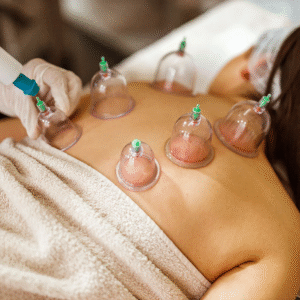If you’ve ever wished to refine the shape of your nose, correct breathing issues, or achieve better facial balance, Rhinoplasty in Islamabad might be the solution you’ve been looking for. Known as a “nose job” in common terms, rhinoplasty is one of the most popular cosmetic procedures worldwide. In Islamabad, the demand for this surgery is growing rapidly due to advanced medical facilities, skilled surgeons, and natural-looking results. This guide will walk you through everything you need to know before taking your first step toward this transformative procedure.
What is Rhinoplasty?
Rhinoplasty is a surgical procedure aimed at reshaping or reconstructing the nose for aesthetic or functional reasons. It can involve altering the bone, cartilage, skin, or all three to achieve the desired outcome. While some patients seek rhinoplasty purely for cosmetic improvement, others undergo the procedure to correct structural issues such as a deviated septum that causes breathing problems.
Reasons People Choose Rhinoplasty in Islamabad
Rhinoplasty serves both medical and aesthetic purposes. Here are the most common reasons people in Islamabad opt for the procedure:
-
Cosmetic Concerns – To adjust the size, shape, or angle of the nose for better facial harmony.
-
Breathing Issues – Correcting internal nasal structure for improved airflow.
-
Post-Injury Reconstruction – Restoring the appearance and function of the nose after trauma.
-
Congenital Defects – Fixing structural abnormalities present since birth.
-
Revision Surgery – Correcting unsatisfactory results from a previous rhinoplasty.
Types of Rhinoplasty
Understanding the types of rhinoplasty will help you discuss your goals more clearly with your surgeon:
-
Open Rhinoplasty – The surgeon makes an incision on the columella (the tissue between the nostrils) for better visibility of nasal structures.
-
Closed Rhinoplasty – Incisions are made inside the nostrils, leaving no visible scars.
-
Non-Surgical Rhinoplasty – Uses dermal fillers to temporarily enhance the shape of the nose without surgery.
-
Revision Rhinoplasty – Performed to correct or improve the results of a previous surgery.
-
Functional Rhinoplasty – Focuses on correcting breathing problems rather than purely cosmetic concerns.
The Rhinoplasty Procedure: Step-by-Step
While techniques vary depending on the surgeon and patient’s needs, most rhinoplasty surgeries in Islamabad follow these steps:
-
Consultation & Planning – Detailed discussions about your goals, medical history, and facial structure.
-
Anesthesia – General or local anesthesia with sedation to ensure comfort.
-
Incisions – Depending on the chosen technique (open or closed).
-
Reshaping – Adjusting bone, cartilage, and soft tissue to achieve the desired shape.
-
Correction of Functional Issues – Straightening the septum or addressing other internal structures if necessary.
-
Closing Incisions – Sutures are used to close incisions, followed by splints or bandages for support.
What to Expect During Recovery
Recovery is an essential part of the rhinoplasty process, and knowing what to expect will help you prepare:
-
First Week – Swelling, bruising, and mild discomfort are common. You may need to wear a nasal splint.
-
Two Weeks – Most visible swelling and bruising subside.
-
One Month – Normal daily activities can usually be resumed.
-
Six Months to One Year – Final results become more defined as internal healing completes.
Recovery Tips:
-
Sleep with your head elevated to reduce swelling.
-
Avoid strenuous activities for at least two weeks.
-
Follow your surgeon’s post-operative care instructions closely.
Potential Risks and Complications
Like any surgical procedure, rhinoplasty comes with potential risks. These may include:
-
Infection
-
Bleeding
-
Breathing difficulties
-
Unsatisfactory results requiring revision
-
Prolonged swelling or numbness
Choosing a highly experienced surgeon minimizes these risks significantly.
How to Choose the Right Surgeon in Islamabad
Selecting the right surgeon is the most crucial decision you’ll make. Here’s what to look for:
-
Board Certification – Ensure the surgeon is certified and qualified in facial plastic surgery.
-
Experience – Look for someone with extensive rhinoplasty experience.
-
Portfolio – Review before-and-after photos of past patients.
-
Communication Skills – The surgeon should listen to your concerns and explain the process clearly.
-
Reviews & Testimonials – Positive patient feedback is a good indicator of trustworthiness.
Cost of Rhinoplasty in Islamabad
The price of rhinoplasty in Islamabad varies depending on factors such as:
-
The surgeon’s expertise
-
Type of rhinoplasty (open, closed, revision, non-surgical)
-
Clinic reputation and location
-
Additional treatments or procedures required
While it may be tempting to choose the lowest price, remember that quality and safety should always come first.
Is Rhinoplasty Right for You?
You may be a good candidate for rhinoplasty if:
-
You are in good general health
-
Your facial growth is complete (usually after age 16–18)
-
You have realistic expectations about the results
-
You want to improve nasal function or appearance
Final Thoughts
Rhinoplasty can be a life-changing procedure that improves not just your nose but also your confidence and overall facial balance. With Islamabad offering advanced medical facilities and experienced surgeons, patients have excellent opportunities for achieving natural, safe, and satisfying results. If you’re ready to take the next step, consult with a trusted professional who understands both the art and science of rhinoplasty. One such reputable facility is SKN Cosmetic Clinic, known for its skilled surgeons, state-of-the-art technology, and patient-centered approach, making it a top choice for those considering rhinoplasty in the capital city.







